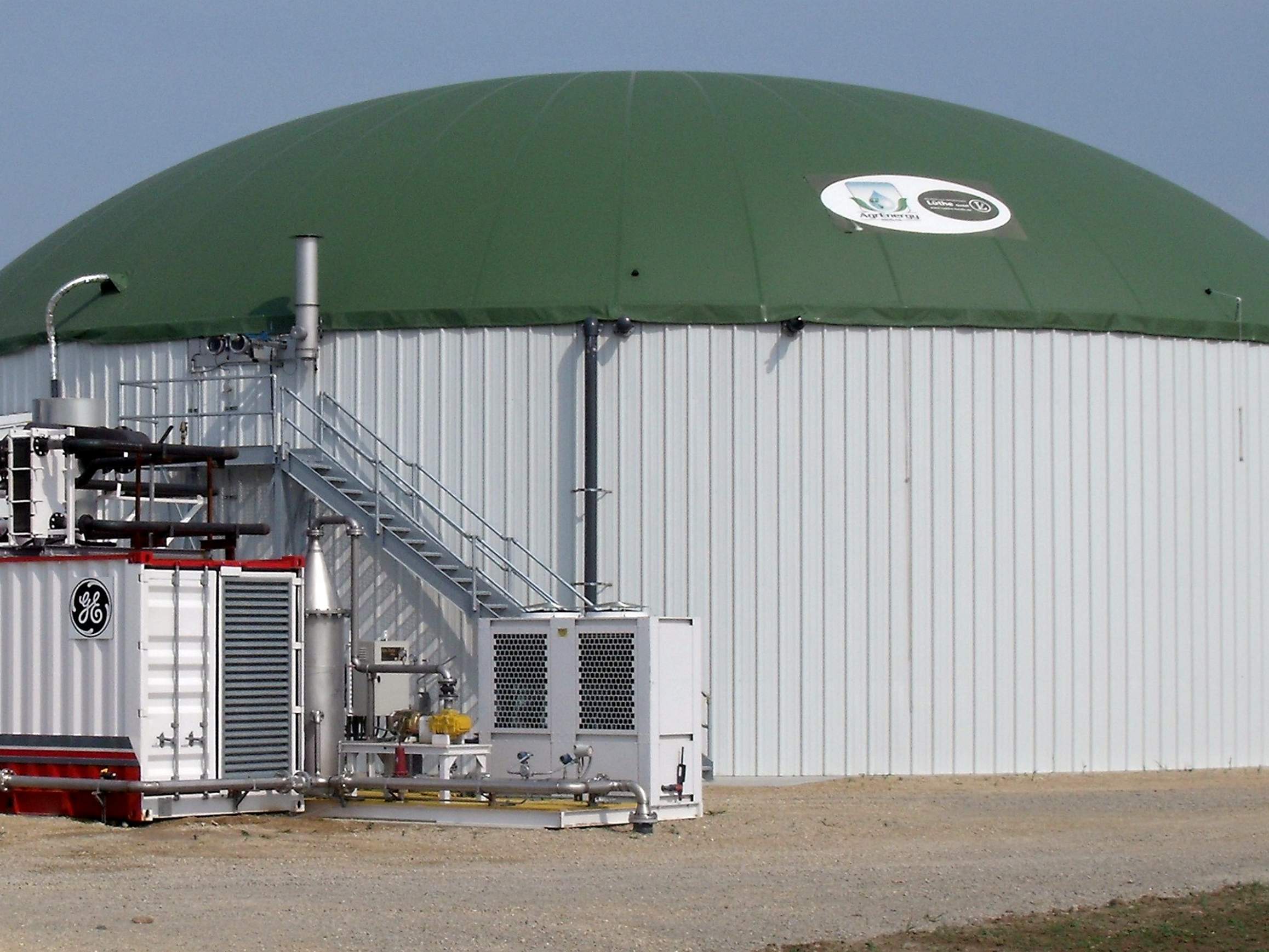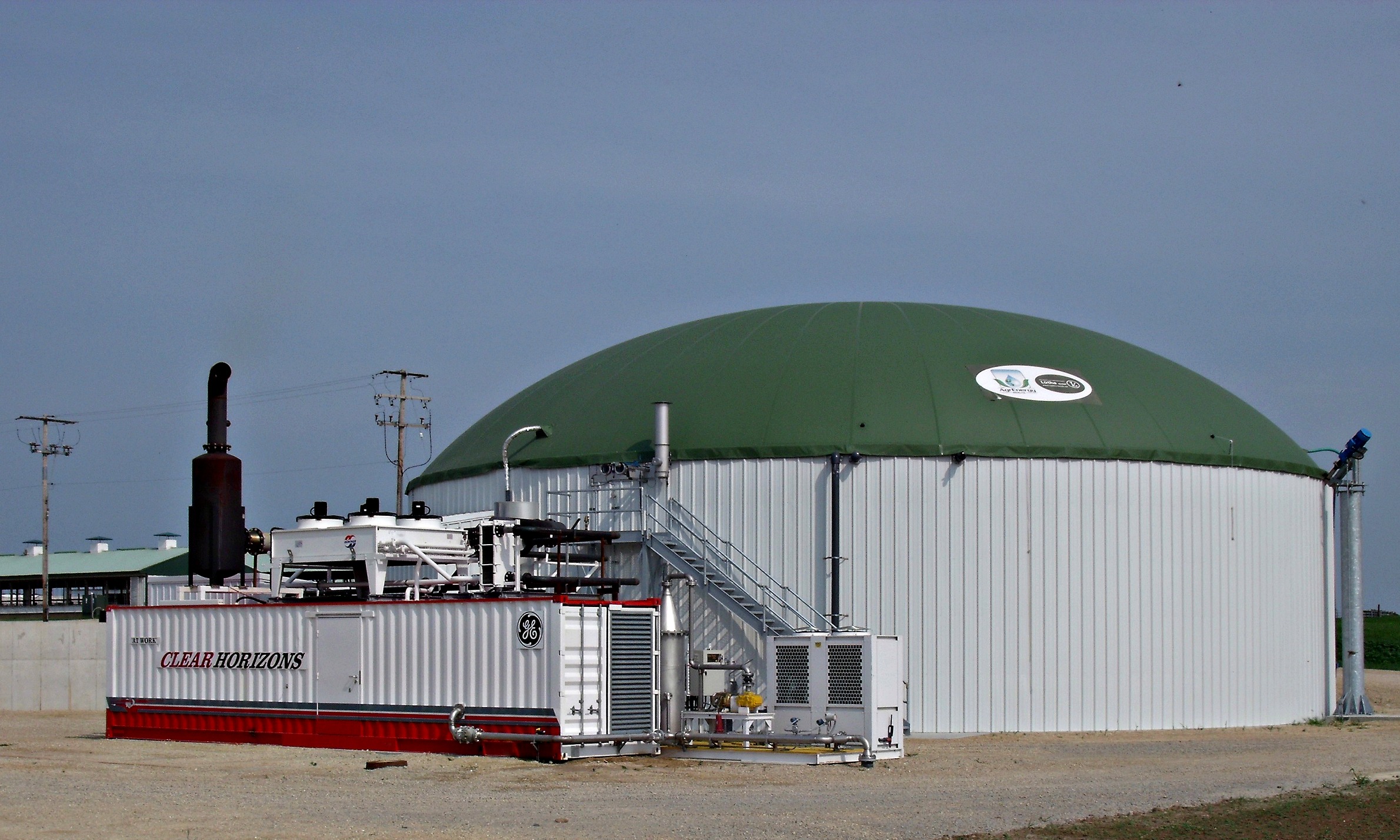
What Manure Digesters Can And Can't Do
The state of Wisconsin is betting on manure digesters in rural northeastern Wisconsin to curb water pollution and other environmental problems linked to the spreading of manure on dairy farms. The region's groundwater geology and copious amount of cow waste make it easy for bacteria and viruses to leach into wells people rely on for drinking water, especially in Kewaunee County. In response, Gov. Scott Walker has asked three state agencies to draw up proposals for manure digesters in environmentally sensitive areas.
Manure digesters use different combinations of microbes, heat, water and physical agitation to process animal waste. Three main substances come out of the process: methane gas used as renewable energy source, liquid manure that can be used for fertilizer, and solid manure that can be used for composting and cow bedding. Digesters have the added benefit of cutting down on farms' greenhouse gas emissions and livestock's considerable impact on climate change.
So how do these functions align with the actual problems the state, dairy farmers and their neighbors are trying to solve? A few agriculture and water-quality specialists across Wisconsin explained what manure digesters actually do, and where they fall short of reducing the environmental impact of manure.
Can: reduce odor
Digesters separate methane gas from manure, so the liquids and solids that come out the other side are far less noxious.
"The odor reduction is remarkable and it also reduces the volume of manure," said Mark Borchardt, a Marshfield-based microbiologist with the United States Department of Agriculture's Agricultural Research Service. This odor is a real environmental and quality-of-life concern, especially for people who live near concentrated animal feeding operations that spray millions of gallons of liquid manure per year. In extreme cases, the smell and gases from liquid manure have driven rural Wisconsinites from their homes.
Can't: Eliminate phosphate and nitrogen
One of the biggest environmental problems manure can intensify is the flow of excess plant nutrients, particularly phosphorous and nitrogen, into watersheds. Phosphorous feeds unpleasant algal blooms in rivers and lakes. Nitrogen, in the form of nitrate, is a significant groundwater pollutant and causes drinking-water problems across Wisconsin. Both phosphorus and nitrate are abundant in manure, and digesters are often pitched as a way to curb nutrient pollution.
This is overselling it, said Rebecca Larson, a professor of biological systems engineering at the University of Wisconsin-Madison.
"It's just a misconception that was pushed a long time ago," she said. "I'm not sure where it really started."
Both Larson and Borchardt pointed out that simple conservation of matter is at work in this case. Bacteria in a digester can perhaps metabolize phosphorous into phosphates, but at the end of the day, a phosphorous atom goes in and a phosphorous atom comes out. Manure digesters don't get rid of these nutrients, full stop.
But digesters can be part of a process that reduces nutrient pollution. When separated liquid and solid manure come out of a digester, farmers can evaluate their phosphorous content and make more deliberate decisions about how much to spread. With this approach, more of the nutrients actually get used by plants, and less runs off into nearby surface water and groundwater. And post-digestion, the solid manure remains can be used elsewhere, meaning less of its nutrient content goes back into the farm's watershed.
Can: Kill some pathogens, some of the time
The biggest water contamination problem for Kewaunee County residents is the increasing presence of pathogens — bacteria and viruses — from fecal contamination. Digesters can kill off pathogens in manure if things get hot enough inside. Most digesters are mesophilic, which means they operate at temperatures of between 86 and 100 degrees Fahrenheit. Others are thermophilic, using additional heating elements and running at temperatures of 120 degrees Fahrenheit or higher. The latter can kill off just about all pathogens, but are more energy-intensive and therefore expensive to run.
Research by Borchardt and Larson has shown that mesophilic digesters definitely help to kill off pathogens in digesters, but with mixed results. Borchardt said he's observed some species of pathogens were mostly wiped out, while others survived at greater rates. Other researchers have found that pathogens like E. coli and Salmonella can easily survive the temperatures in mesophilic digesters.
Borchardt noted he has seen increasing interest in designing digesters that deliberately set out to eliminate pathogens.
"Digesters are designed to maximize methane production" he said. "It's not like wastewater treatment plants for human waste...it's not that one's good or one's bad or anything like that, it's just two different goals."
Can: Generate a revenue stream
If digesters aren't ideal tools for eliminating environmental contaminants, why are they touted as good solutions? One reason is that they have a shot at paying for the level of treatment they do provide.
The methane gas digesters extract from manure can be used to produce heat or electricity for buildings, or for vehicle fuel. How much methane a digester produces will depend on the size of the digester and the varying chemical characteristics of what goes into it. Its profitability will depend on the "buyback rate" — the energy-industry term for what a utility pays renewable-energy generators for their power.
But the economic future of biogas isn't clear. It's had trouble competing with other sources of energy, especially cheap natural gas. Barring major incentives or changes in Wisconsin's renewable energy and carbon policy, those buyback rates won't be skyrocketing anytime soon.
"The price today is probably a third of what it was 10 years ago," said Gary Radloff, a policy analyst at the Wisconsin Energy Institute. Power generation from digesters has stagnated in recent years, he explained.
"Right now I think it's kind of a tough marketplace," Radloff added.
Can't: Solve water-quality problems single-handedly
The manure digestion process itself isn't the end of the story. The liquids and solids that come out of a digester can be subjected to a number of other post-treatment practices, depending on what the operator is trying to accomplish. These actions can include additional disinfection, or processes to filter out nutrients. And regardless of those practices, there's also the need to make choices about how the effluent is used, like spreading post-digester manure in a way that doesn't cause excessive nutrient runoff.
"When I think of processing manure and doing something with it, I really think of it as a whole system with digesters being part of that solution," said Liz Binversie, an agriculture educator with UW-Extension Brown County.
Additional treatment processes will likely be a consideration as the state receives proposals from the Wisconsin Department of Natural Resources, Wisconsin Public Service Commission, and Wisconsin Department of Agriculture, Trade, and Consumer Protection. DNR spokesperson James Dick wouldn't speculate on specifics, but he did mention that the state would look for post-digestion considerations paired with the digesters themselves.
"We are discussing digester technology combined with a water treatment system that can be used to address water quality concerns," Dick said.
Of course, digesters alone won't solve a regional groundwater problem. Borchardt sees a lot of promise in the technology, but cautions that it's not a panacea.
"The way I would view it is, it's one treatment technology that provides some benefits," he said. "I just don't think it should be over-promised."



